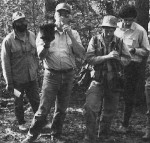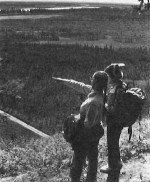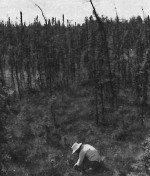Early Winter
A record three-day snow followed by nearly a month of record-shattering low temperatures brought a premature close to summer field work at the Bonanza Creek (BNZ) LTER site. September’s record cold set an average of -1.4°C, 8.5°C below normal. The storm arrived while trees were fully leaved and fall coloration had barely begun. Over a month later, 90 percent of the leaves remain on the trees.
The heavy, wet snow caused considerable damage, especially to birches. Balsam poplars tended to snap under the weight, but aspen suffered less damage. Many trees fell against powerlines, causing outages of up to seven days in the Fairbanks area. Crews spent many hours clearing roads and trails to reach the LTER study sites, but some on the floodplain could not be reached due to early formation of ice on the Tanana River. Many fall research activities, such as litterfall collections, had to be suspended; however, the conditions will provide unique research opportunities, such as following the decomposition of leaves in situ.
The early, heavy snow also impacted wildlife: small birds were caught before their fall migration, and unusually large numbers of robins, juncos, sparrows, and varied thrushes were observed feeding on chokecherries and at local bird feeders after the storm. Two hundred young trumpeter swans were abandoned on nearby Minto Flats—they had not developed adequately to begin fall migration.
Perhaps most unusual was the migration of 1,000 Delta caribou, which normally winter in the Alaska Range, through the Fairbanks and BNZ area. In early October, caribou swam the Tanana and headed north: many were seen in subdivisions west of town, and a number were killed crossing the highway. This is the first known occurrence of caribou in the vicinity in 50 years.


 Enlarge this image
Enlarge this image




